ReptilesCentral Netted Dragon Ctenotus leonhardii Ctenotus saxatilis Crocodile Geckos Gidgee Skink Goanna, Monitor, Perentie Inland Bearded Dragon Lined Firetail Skink Long-nose Dragon Serpentes Thorny Devil Yellow-Bellied Water Skink (Eulamprus heatwolei)
The distinctive Thorny Devil (Moloch horridus) is found in arid scrub and desert regions of Central Australia. Covered with large thorn-shape spines over its head, body, tail and limbs, the Thorny Devil also has a spinose hump on the back of its neck, that looks similar to two gumnuts joined together. The spines are sharp to the touch.
The colour is mottled arrangement of predominantly mustard yellow and rusty red. Colours can vary depending on the colour of the sand where the Thorny Devil lives. Those on the rust red of Central Australia taken on that colouration, whilst other found living on desert yellow/white sand are lighter in colour.
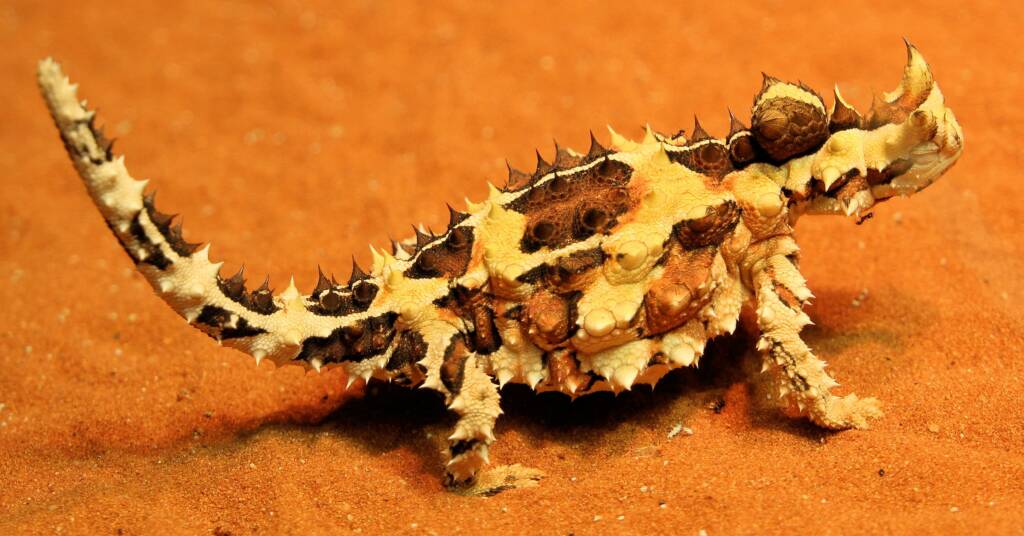
the Thorny devil will close it’s eyes to prevent the ants biting it in the eye © CK Leel
The Thorny Devil is well adapted to the arid regions of Australia with tiny channels between the scales on the belly and legs. Morning dew, damp sand and puddles of water are then channelled up and along the body of the Thorny Devil by capillary action to the mouth of the lizard. As they soak up water, their body colour become brighter and more vivid.
The Thorny Devil feeds exclusively on certain species of small black ants, eating anywhere between 1,000 to 5,000 ants per meal.
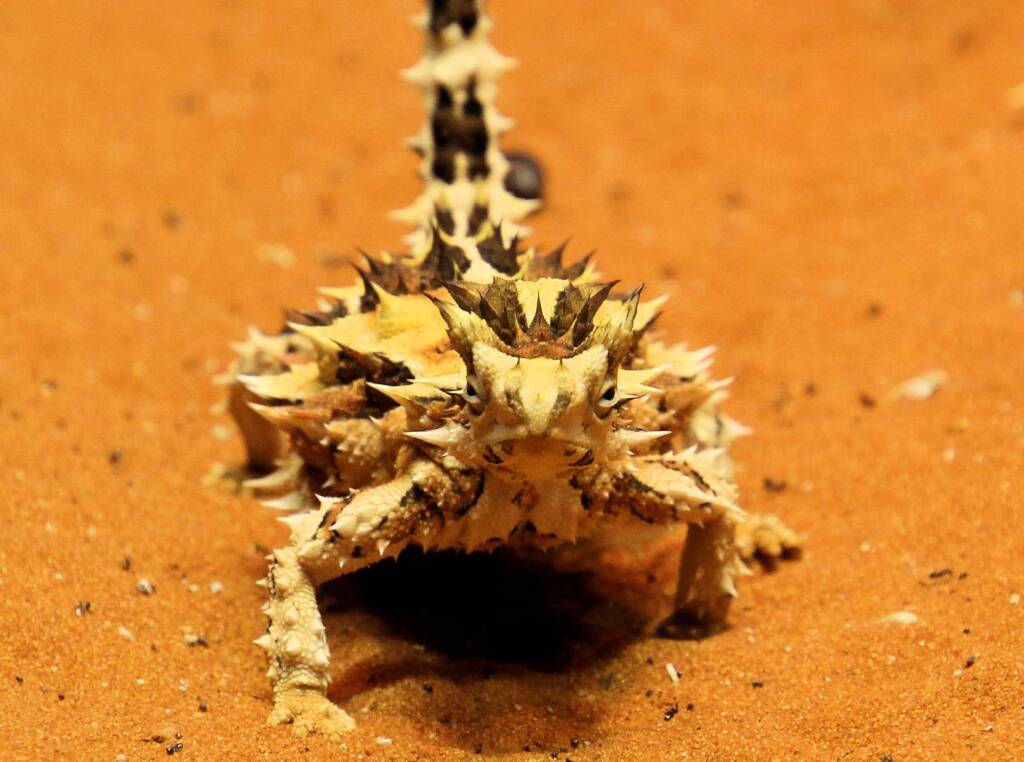
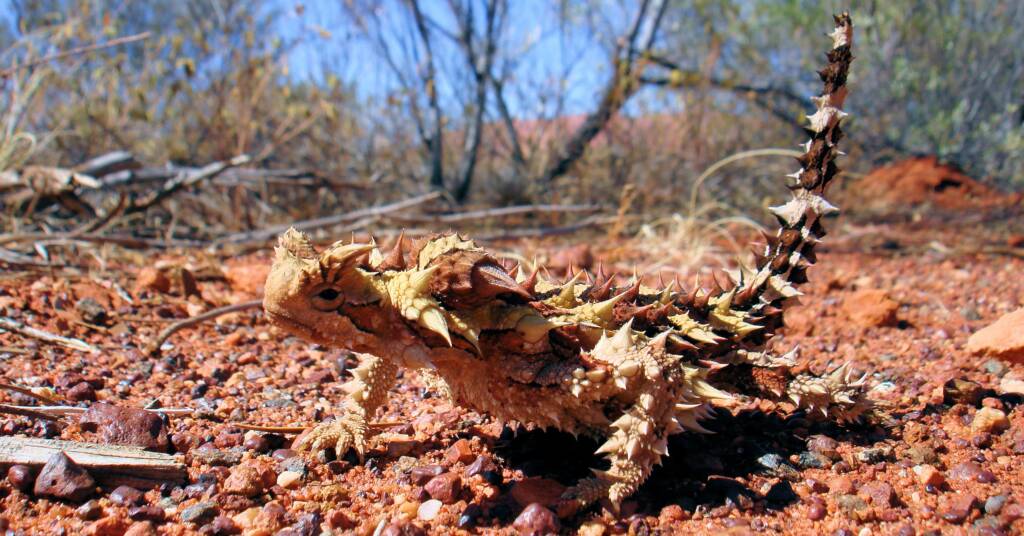

When you look at the underside of the Thorny Devils, each individual will have their own unique pattern, with no two Thorny Devil having the same pattern, providing a unique figure print that allows you to tell them apart.
The Thorny Devil can live for about twenty years, with breeding staring at three years of age. It attracts a mate through elaborate courtship rituals that include head-bobbing and leg-waving. The female then lays a clutch of 3-10 eggs in a chamber up to 30 cm below the surface of the ground. It can take anywhere between 13 to 18 weeks for incubation depending on the weather (the warmer weather speeds up the process). Once hatched, the young lizard starts to eat ants almost immediately.
The spectacular creature is a favourite of many young children and adults, with it’s strange jerky gait and tail held in an upward curve.

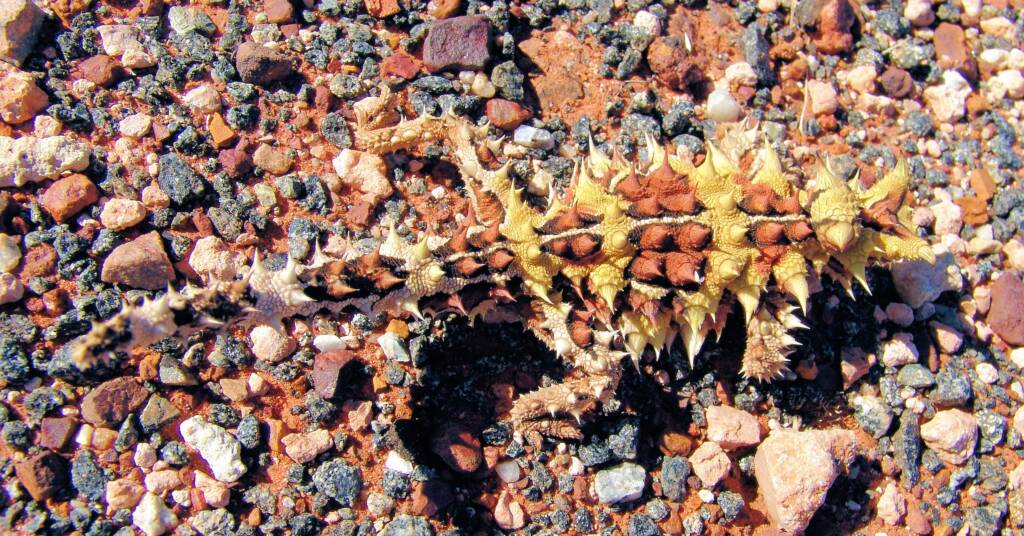
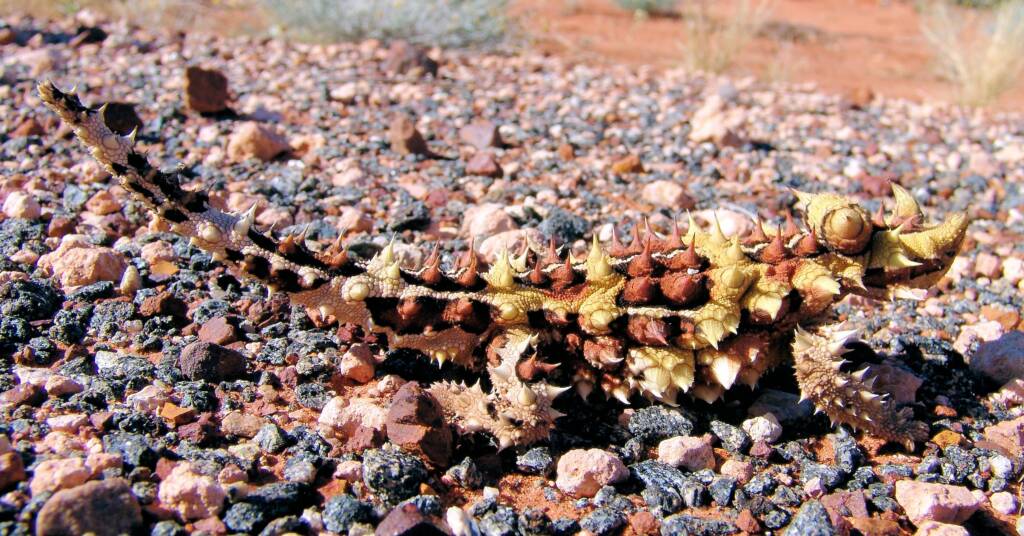
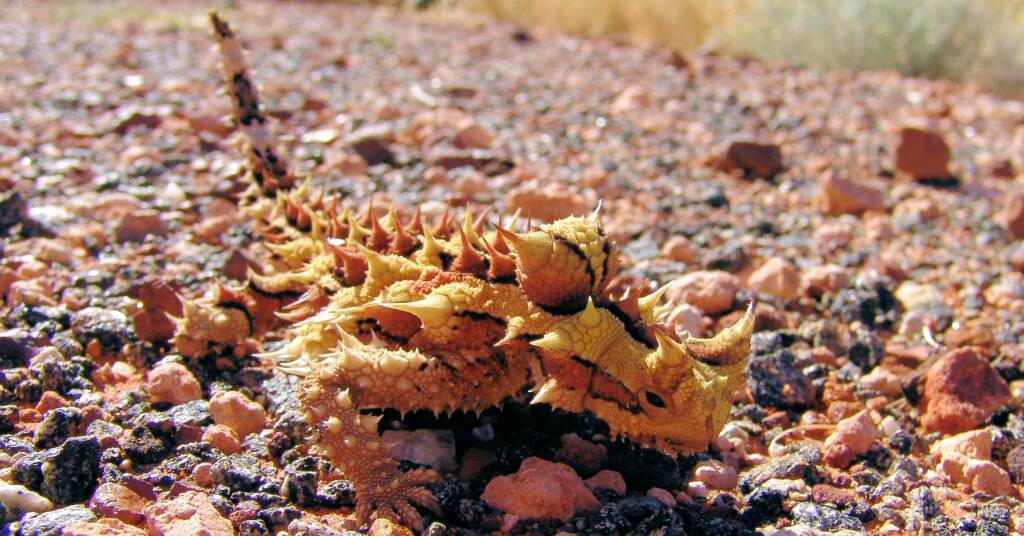
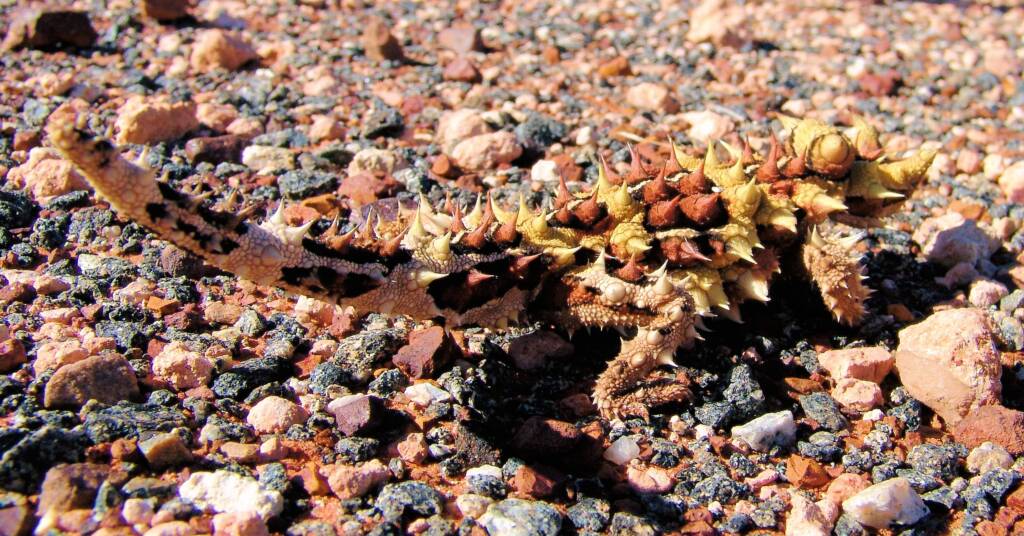

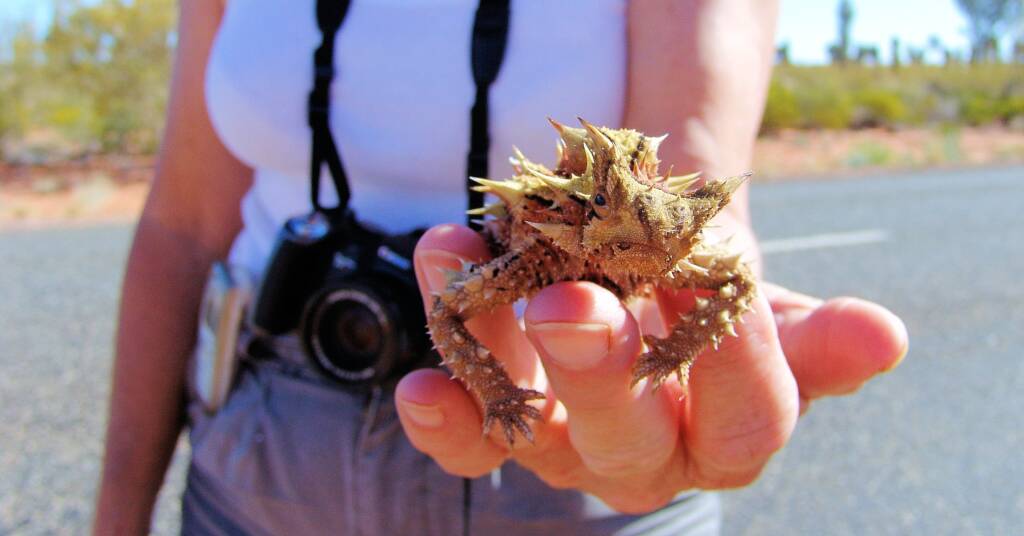
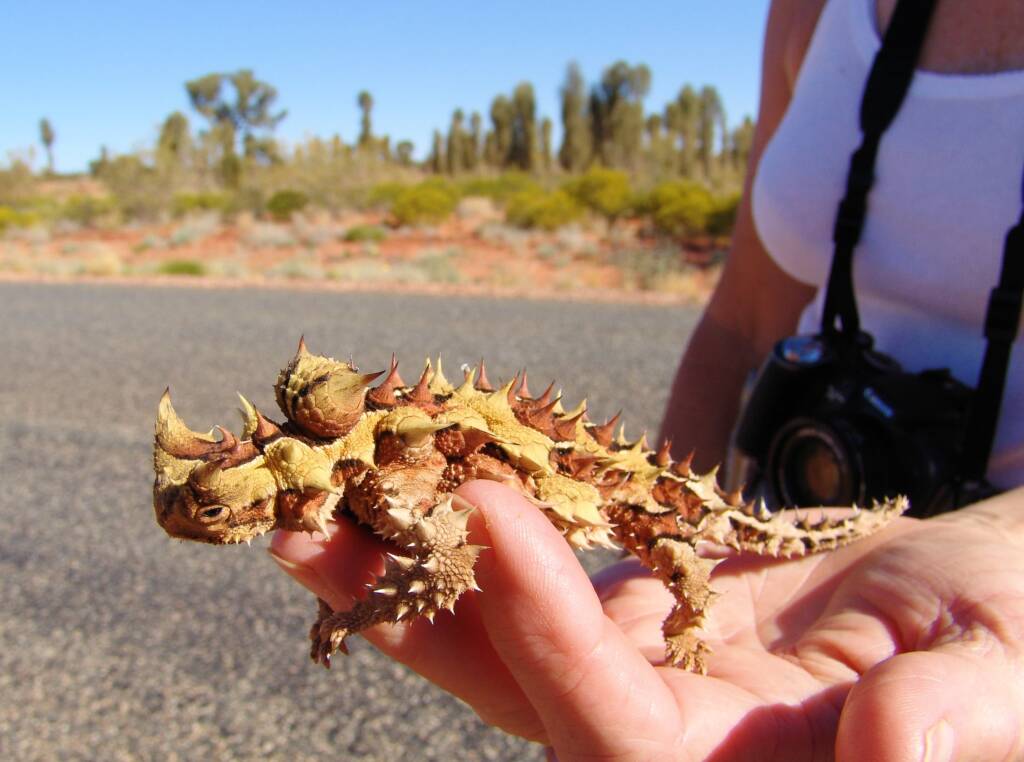
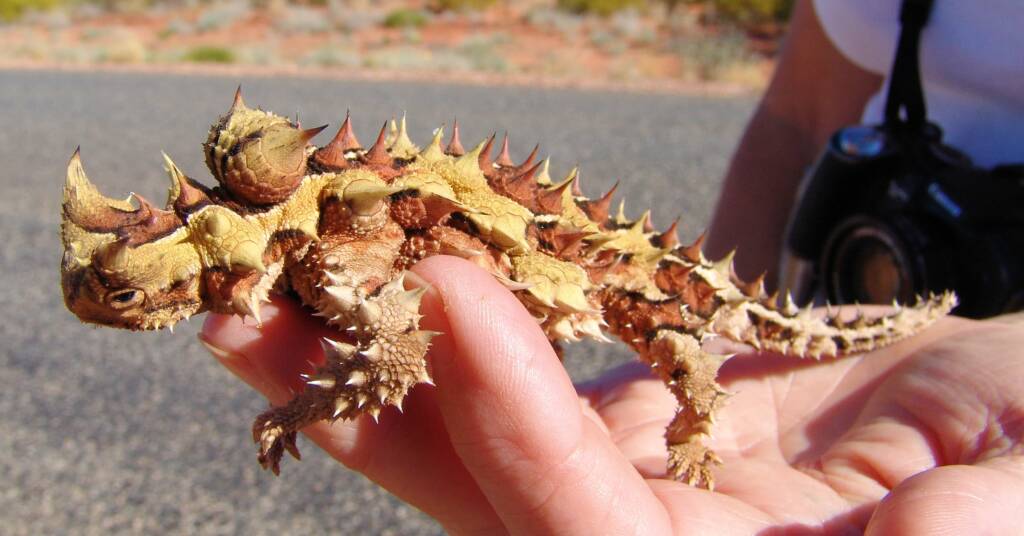
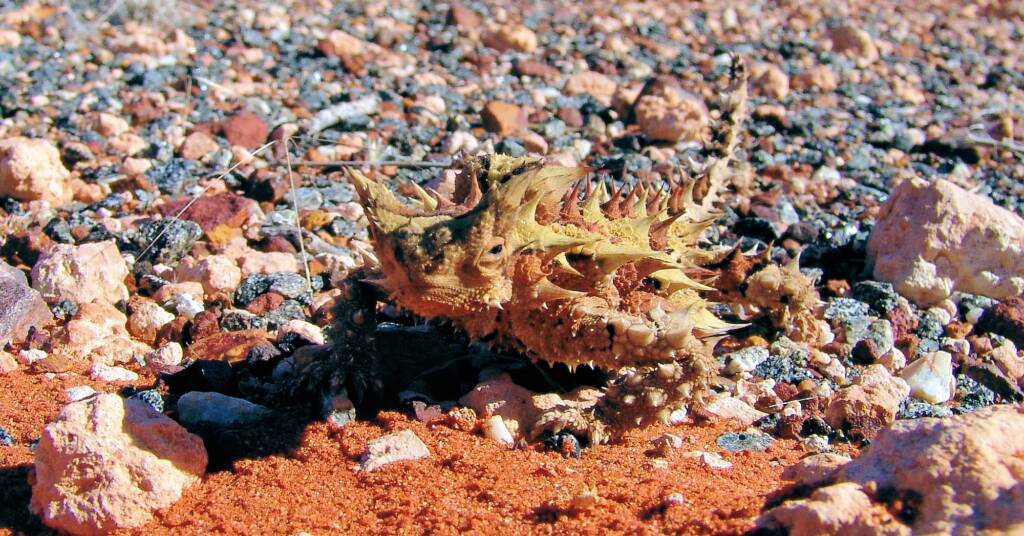

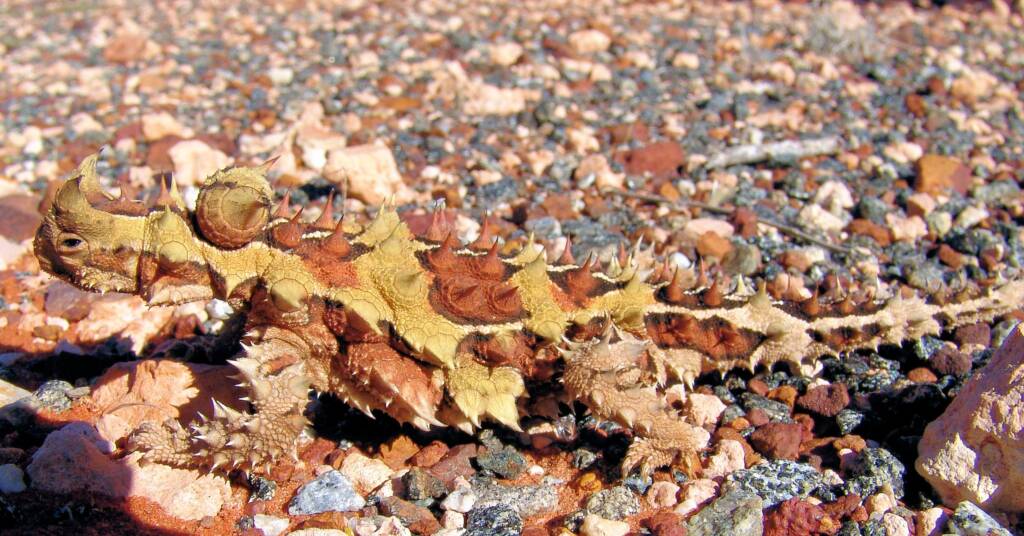
Images © CK Leel
Aboriginal Connection
The Thorny Devil is one of those important totemic animals of the Australia’s Aboriginal people. In the Utopia region of Central Australia, this lizard is known as the Mountain Devil Lizard and the Thorny Devil Lizard.
There is a prominent Dreamtime Story of Arnkerrth (the name for the Old Woman Mountain Devil Lizard or Thorny Devil Lizard), who travelled the vast regions of Atnangker Country, defining the landscape and identifying sacred sites.
It was told that the Mountain Devil Lizard ancestors were female ancestral figures who walked the land. They would collect the soft sandy ochres, carrying them in a pouch located at the back of the neck. Theses ancestral figures would then deposit the ochres in small hills across the flat country, and in doing so created the sandhills of Atnangkere.
One of the most prominent artist who painted this dreaming is Kwementyaye Petyarre (also known as Kathleen Petyarre, c 1938 – 24 November 2018).
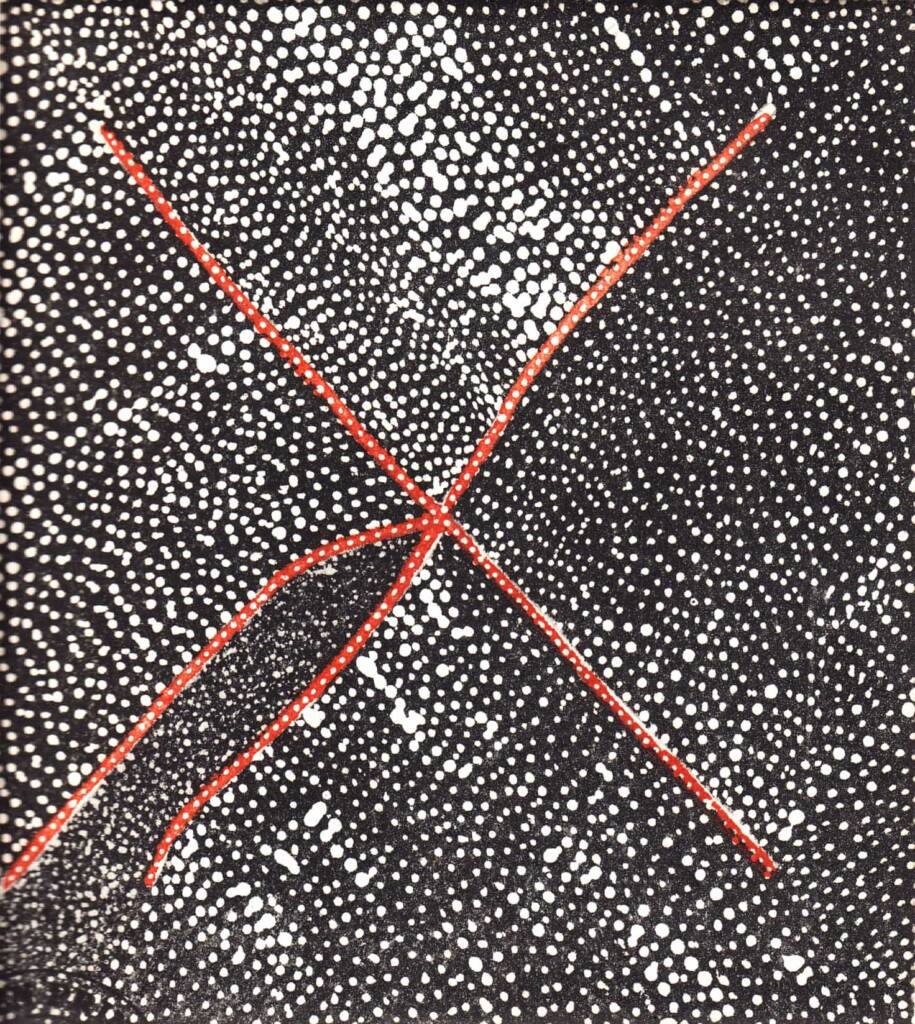
Source: Gallery Gondwana / Basil Hall Editions, Darwin
Etching and aquatint, from the Collectors’ Folio Series 2 – Central Australia
Artist Raymond Walters Japanangka also paints Mountain Devil Lizard (Thorny Devil), which is his Grandmothers dreaming.
Using a contemporary style, Raymond paints the important role in ceremony that that is this dreaming. The colours of the Mountain Devil Lizard signify ochres that were deposited during the dreamtime in specific areas that are now collected for ceremonial purposes. Raymond uses the pattern found on the back of the Mountain Devil Lizard and its habitat of Spinifex grass to create his unique works.
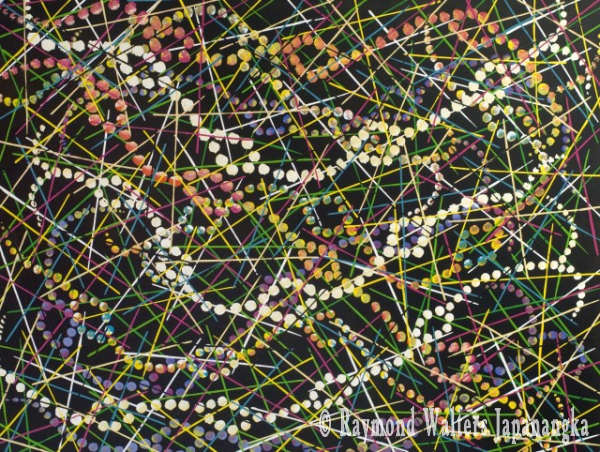
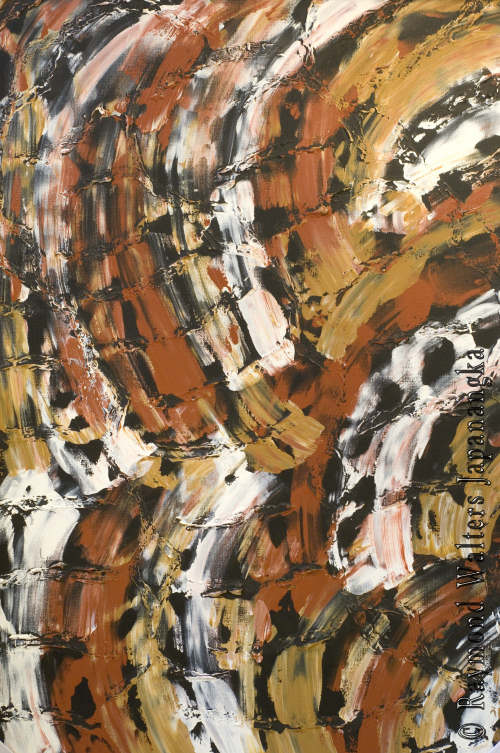
Atnangker on Anmatyerr country is located in Australia’s north-east Central Desert. Arnkerrth is from the Anmatyerr language meaning Mountain Devil Lizard and is one of the prominent Dreamings for Anmatyerre/Alyawarr people of the Northern Territory.
See our page on Thorny Devil – Aboriginal Symbols of Fauna and Wildlife.
- Scientific classification
- Kingdom: Animalia
- Phylum: Chordata
- Class: Reptilia
- Order: Squamata
- Suborder: Iguania
- Family: Agamidae
- Subfamily: Amphibolurinae
- Genus: Moloch
- Species: Moloch horridus


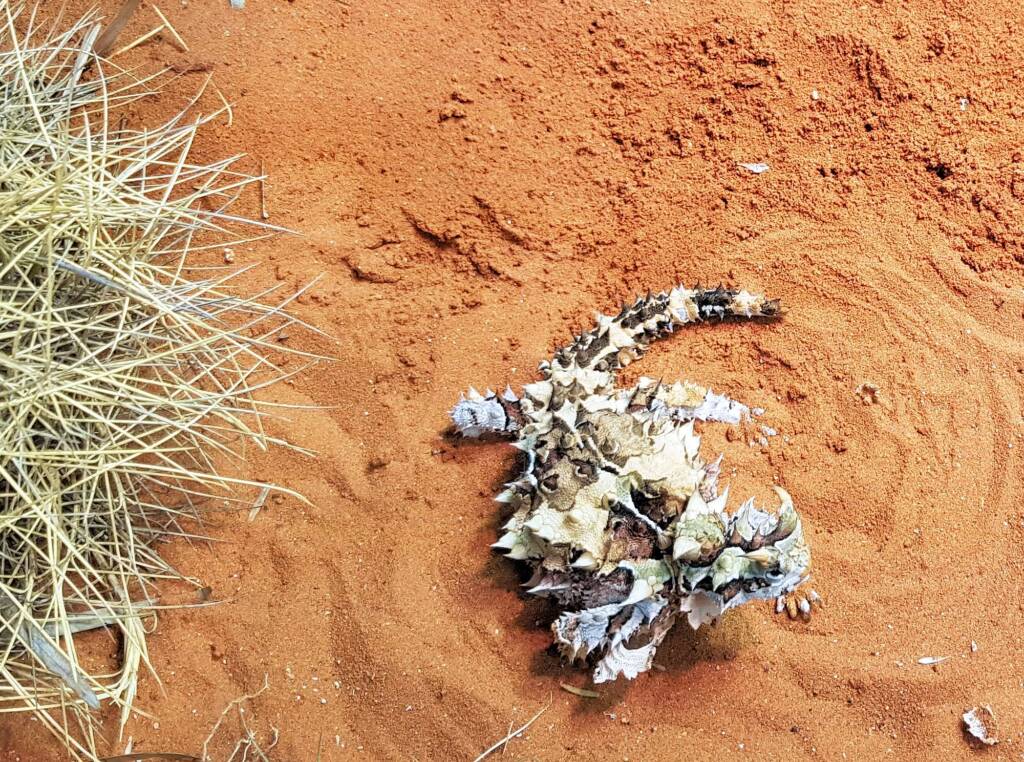
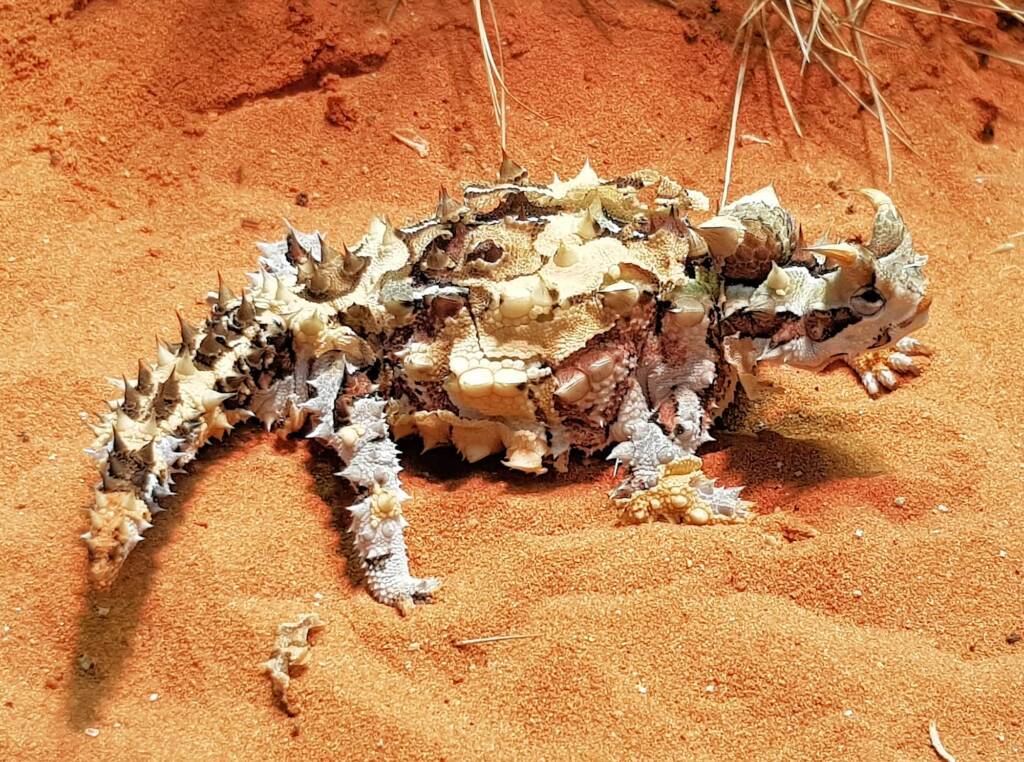
ReptilesCentral Netted Dragon Ctenotus leonhardii Ctenotus saxatilis Crocodile Geckos Bynoe’s Gecko Eastern Tree Dtella Southern Spotted Velvet Gecko Gidgee Skink Goanna, Monitor, Perentie Black Headed Goanna Perentie Pygmy Mulga Goanna Sand Goanna Inland Bearded Dragon Lined Firetail Skink Long-nose Dragon Serpentes Blind Snake Central Carpet Python Children’s Python Stimson’s Python Thorny Devil Yellow-Bellied Water Skink (Eulamprus heatwolei)
